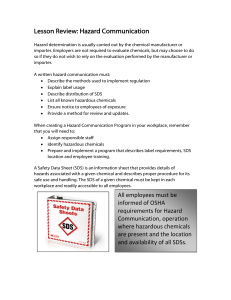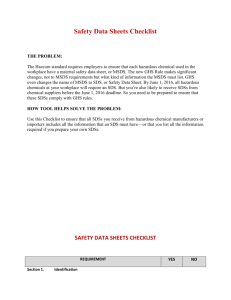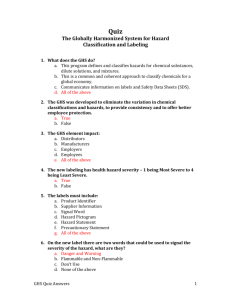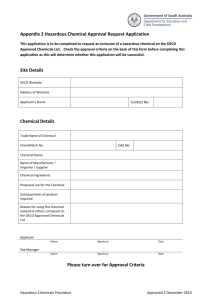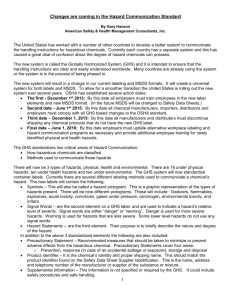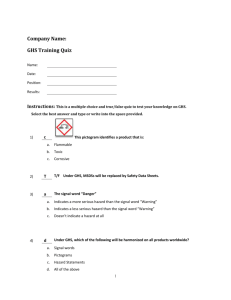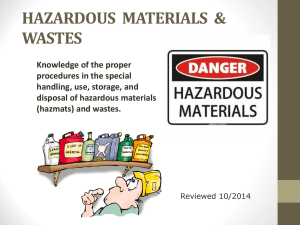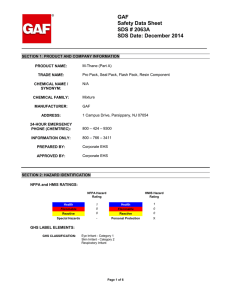Quiz 1 - San Juan College
advertisement
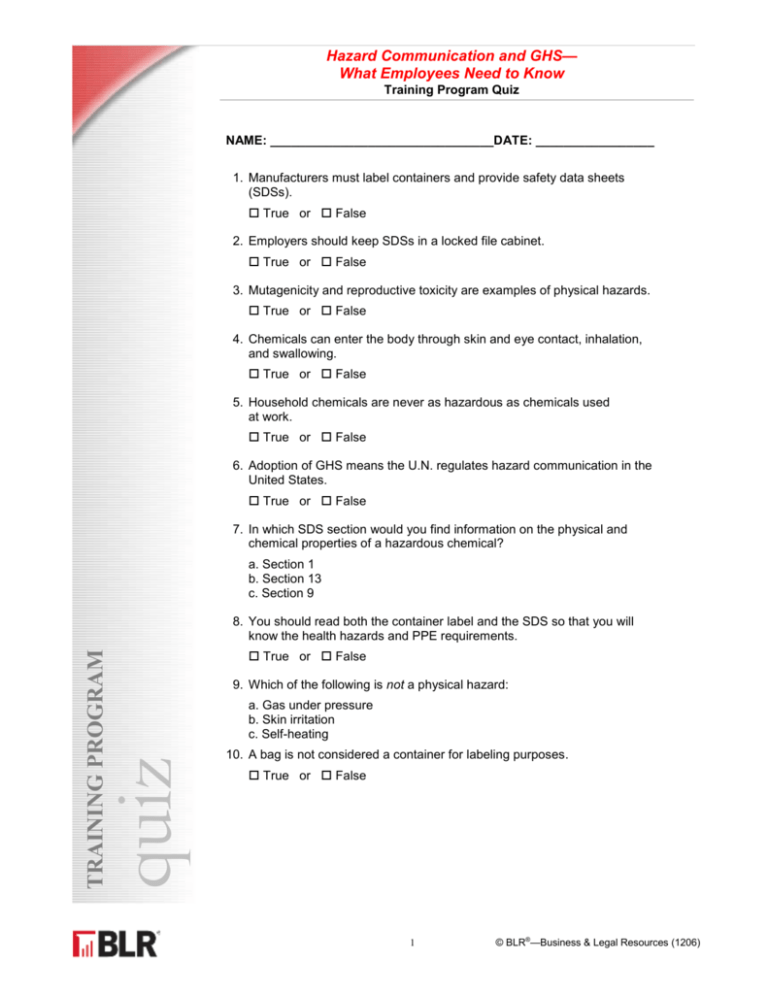
Hazard Communication and GHS— What Employees Need to Know Training Program Quiz NAME: ________________________________DATE: _________________ 1. Manufacturers must label containers and provide safety data sheets (SDSs). True or False 2. Employers should keep SDSs in a locked file cabinet. True or False 3. Mutagenicity and reproductive toxicity are examples of physical hazards. True or False 4. Chemicals can enter the body through skin and eye contact, inhalation, and swallowing. True or False 5. Household chemicals are never as hazardous as chemicals used at work. True or False 6. Adoption of GHS means the U.N. regulates hazard communication in the United States. True or False 7. In which SDS section would you find information on the physical and chemical properties of a hazardous chemical? a. Section 1 b. Section 13 c. Section 9 quiz TRAINING PROGRAM 8. You should read both the container label and the SDS so that you will know the health hazards and PPE requirements. True or False 9. Which of the following is not a physical hazard: a. Gas under pressure b. Skin irritation c. Self-heating 10. A bag is not considered a container for labeling purposes. True or False 1 © BLR®—Business & Legal Resources (1206) Hazard Communication and GHS— What Employees Need to Know Training Program Quiz Answers 1. True. 2. False. SDSs must always be accessible to the employees. 3. False. These are health hazards posed by a hazardous chemical. 4. True. 5. False. Many household materials are hazardous. 6. False. GHS is an international guideline that was used to amend our regulations. OSHA still regulates HazCom. 7. c. Section 9 of the SDS details the physical and chemical properties of a hazardous chemical. 8. True. 10. False. Containers are defined as any bag, barrel, bottle, box, can, cylinder, drum, reaction vessel, storage tank, or anything similar. TRAINING PROGRAM quiz answers 9. b. Skin irritation is a potential health hazard of a hazardous chemical. 2 © BLR®—Business & Legal Resources (1206)
